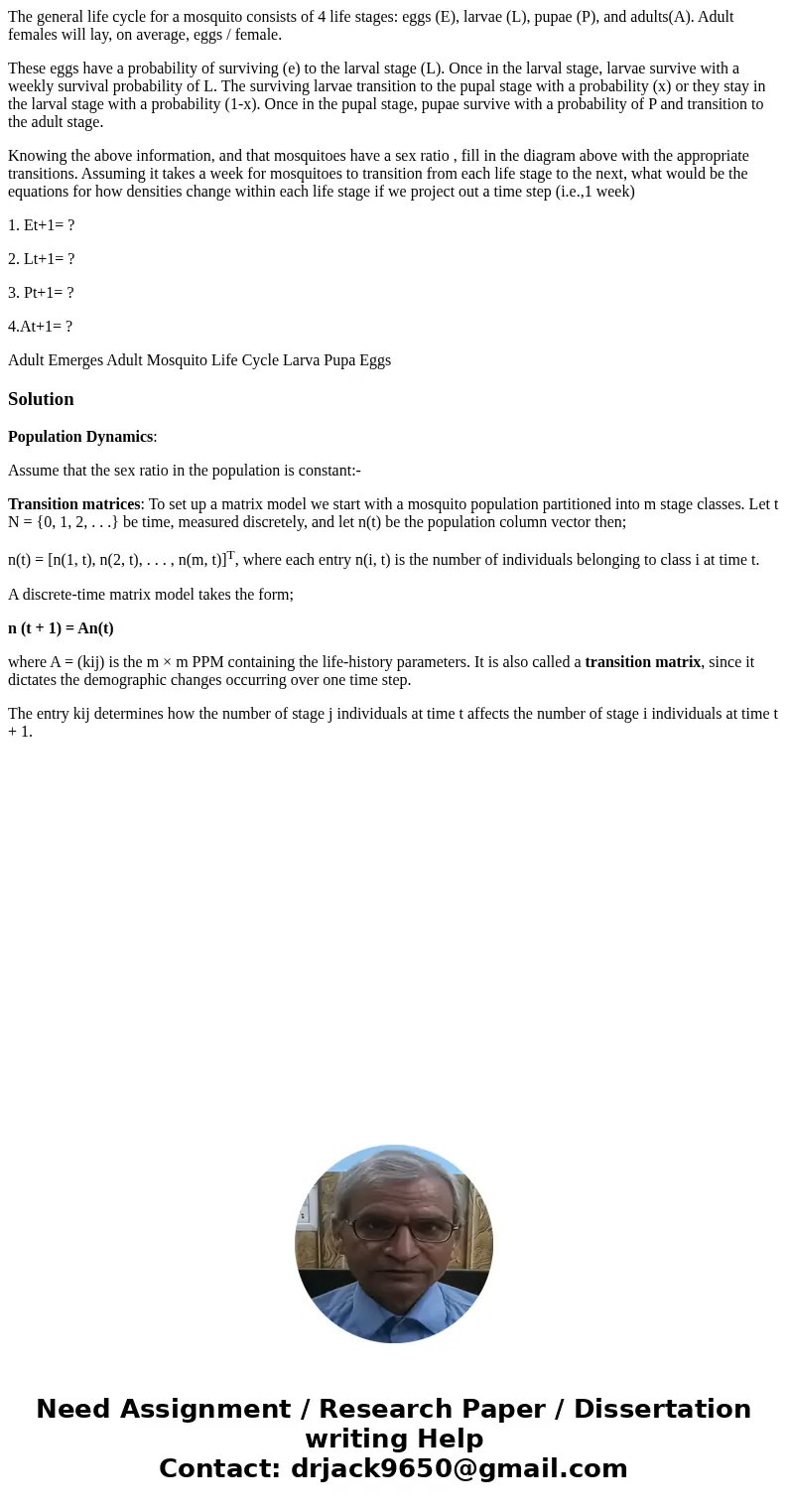The general life cycle for a mosquito consists of 4 life sta
The general life cycle for a mosquito consists of 4 life stages: eggs (E), larvae (L), pupae (P), and adults(A). Adult females will lay, on average, eggs / female.
These eggs have a probability of surviving (e) to the larval stage (L). Once in the larval stage, larvae survive with a weekly survival probability of L. The surviving larvae transition to the pupal stage with a probability (x) or they stay in the larval stage with a probability (1-x). Once in the pupal stage, pupae survive with a probability of P and transition to the adult stage.
Knowing the above information, and that mosquitoes have a sex ratio , fill in the diagram above with the appropriate transitions. Assuming it takes a week for mosquitoes to transition from each life stage to the next, what would be the equations for how densities change within each life stage if we project out a time step (i.e.,1 week)
1. Et+1= ?
2. Lt+1= ?
3. Pt+1= ?
4.At+1= ?
Adult Emerges Adult Mosquito Life Cycle Larva Pupa EggsSolution
Population Dynamics:
Assume that the sex ratio in the population is constant:-
Transition matrices: To set up a matrix model we start with a mosquito population partitioned into m stage classes. Let t N = {0, 1, 2, . . .} be time, measured discretely, and let n(t) be the population column vector then;
n(t) = [n(1, t), n(2, t), . . . , n(m, t)]T, where each entry n(i, t) is the number of individuals belonging to class i at time t.
A discrete-time matrix model takes the form;
n (t + 1) = An(t)
where A = (kij) is the m × m PPM containing the life-history parameters. It is also called a transition matrix, since it dictates the demographic changes occurring over one time step.
The entry kij determines how the number of stage j individuals at time t affects the number of stage i individuals at time t + 1.

 Homework Sourse
Homework Sourse